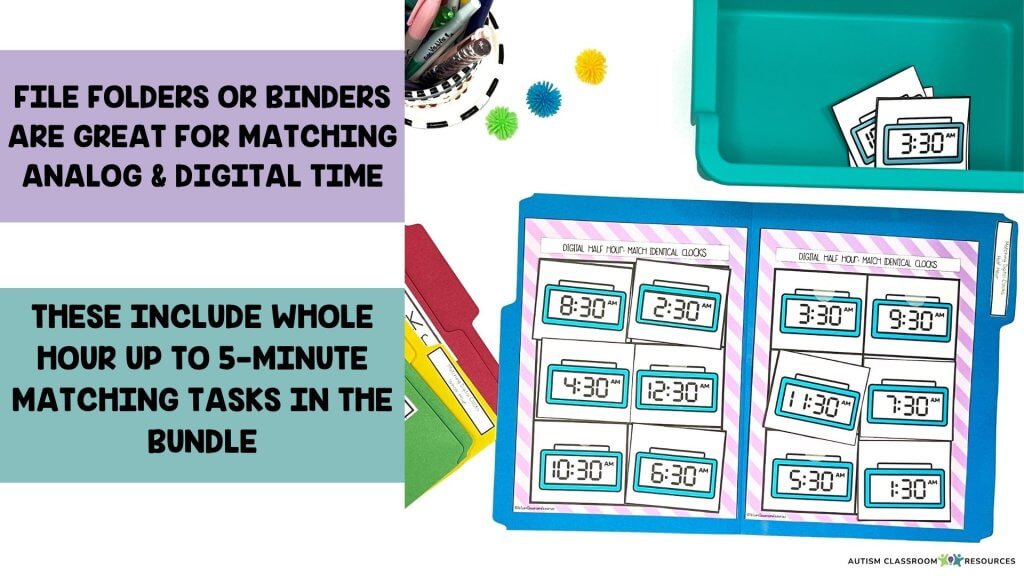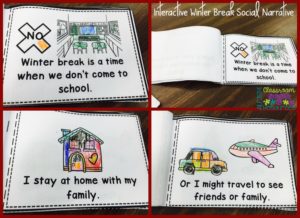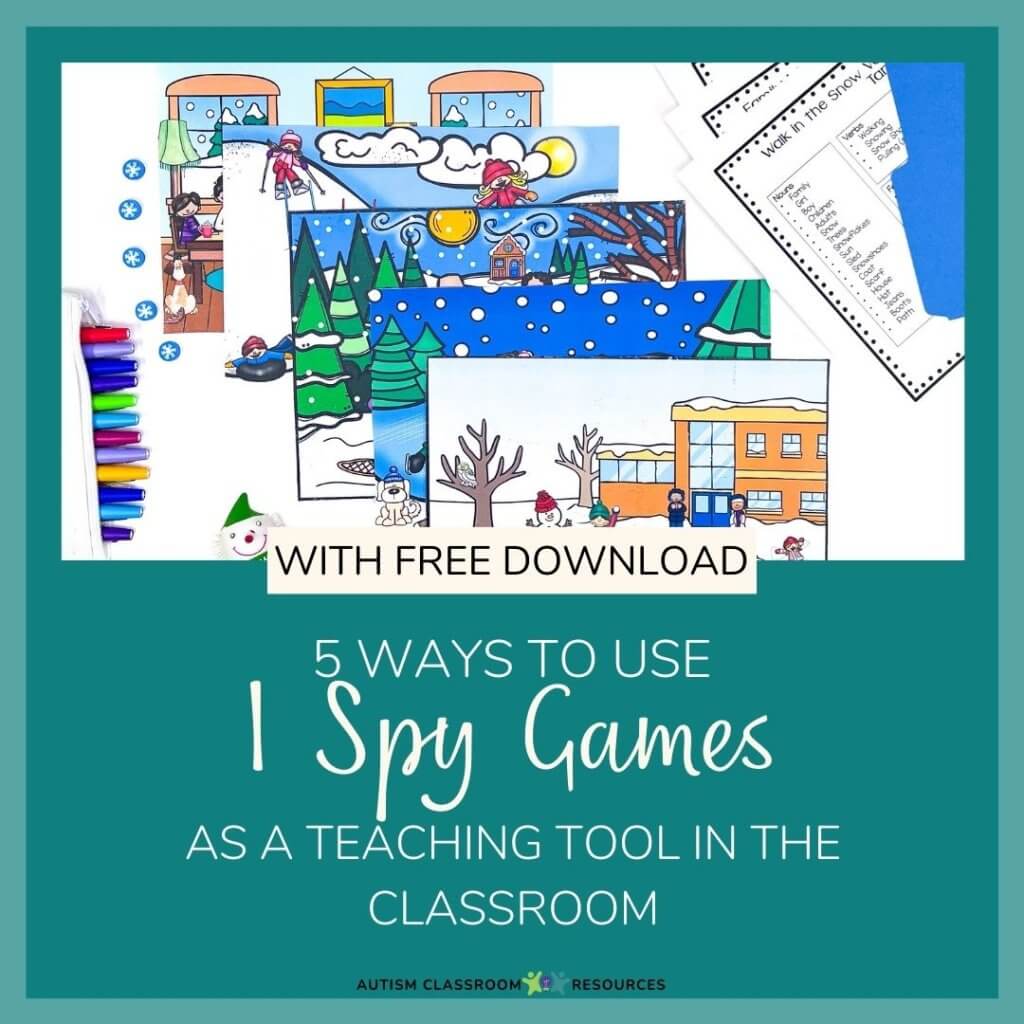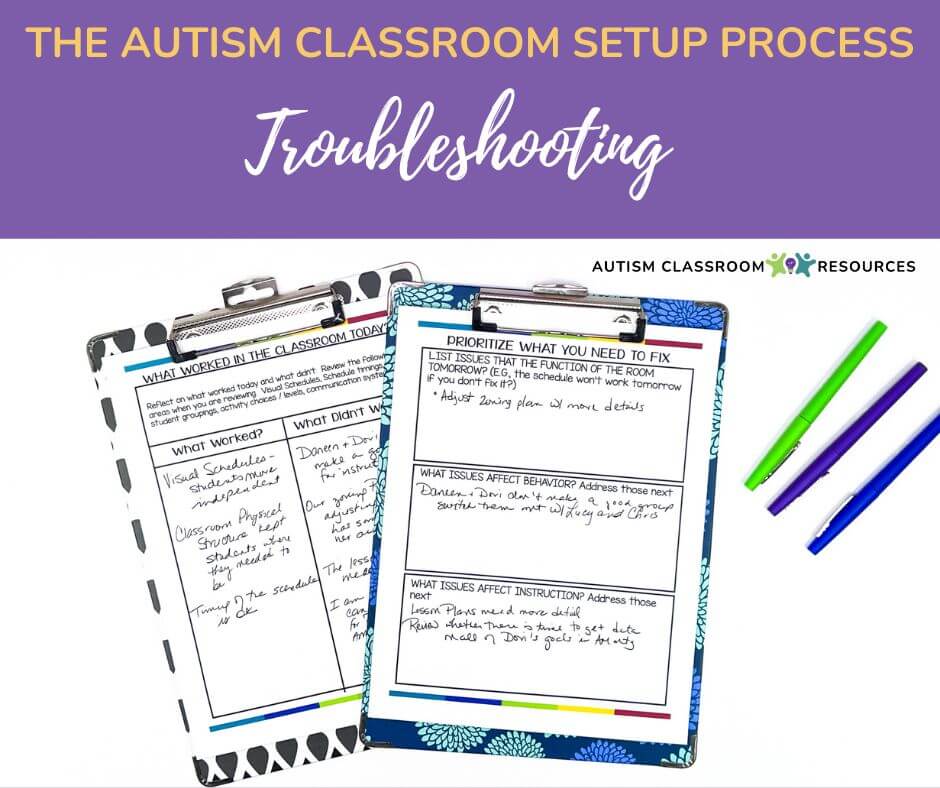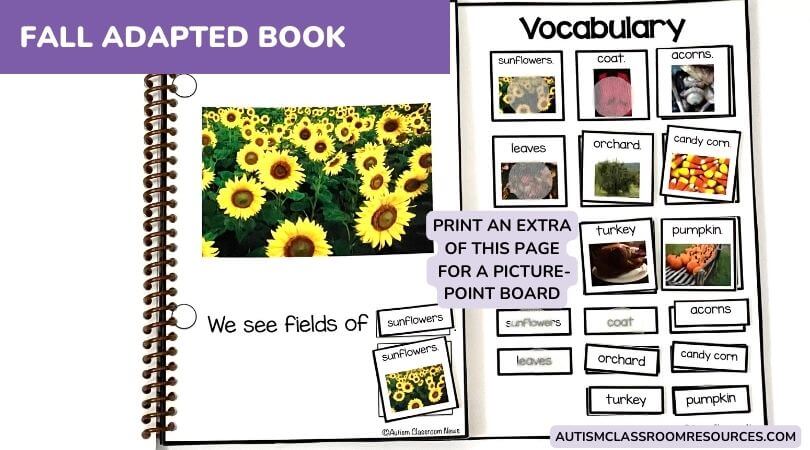Letís face it, downtime in the classroom is not your friend, but strategies for student engagement are! Iíve talked about the magic of engagement in this episode of the podcast. Essentially, engagement is magical because when students are actively...
Letís face it, downtime in the classroom is not your friend, but strategies for student engagement are! Iíve talked about the magic of engagement in this episode of the podcast. Essentially, engagement is magical because when students are actively engaged in activities, you see fewer challenging behaviors and students learn more. But engagement is also important because itís a lot easier to maintain student engagement than it is to try to get it back once youíve lost it.
Downtime is the Opposite of Student Engagement But Isnít Always Expected
ďDowntime if Not Your FriendĒ as a colleague of mine used to say. And sheís right. Downtime is time that students are not actively engaged in an activity. Sometimes we end up with downtime scheduled into our day without realizing it and need strategies for student engagement to prevent it from happening.
For instance, all the students donít arrive at the same time in the morning. If we donít program something for that time, it becomes a time that students arenít engaged (i.e., downtime) and you are likely to see more challenging behavior. You are also likely to have a harder time getting them to engage when itís time.
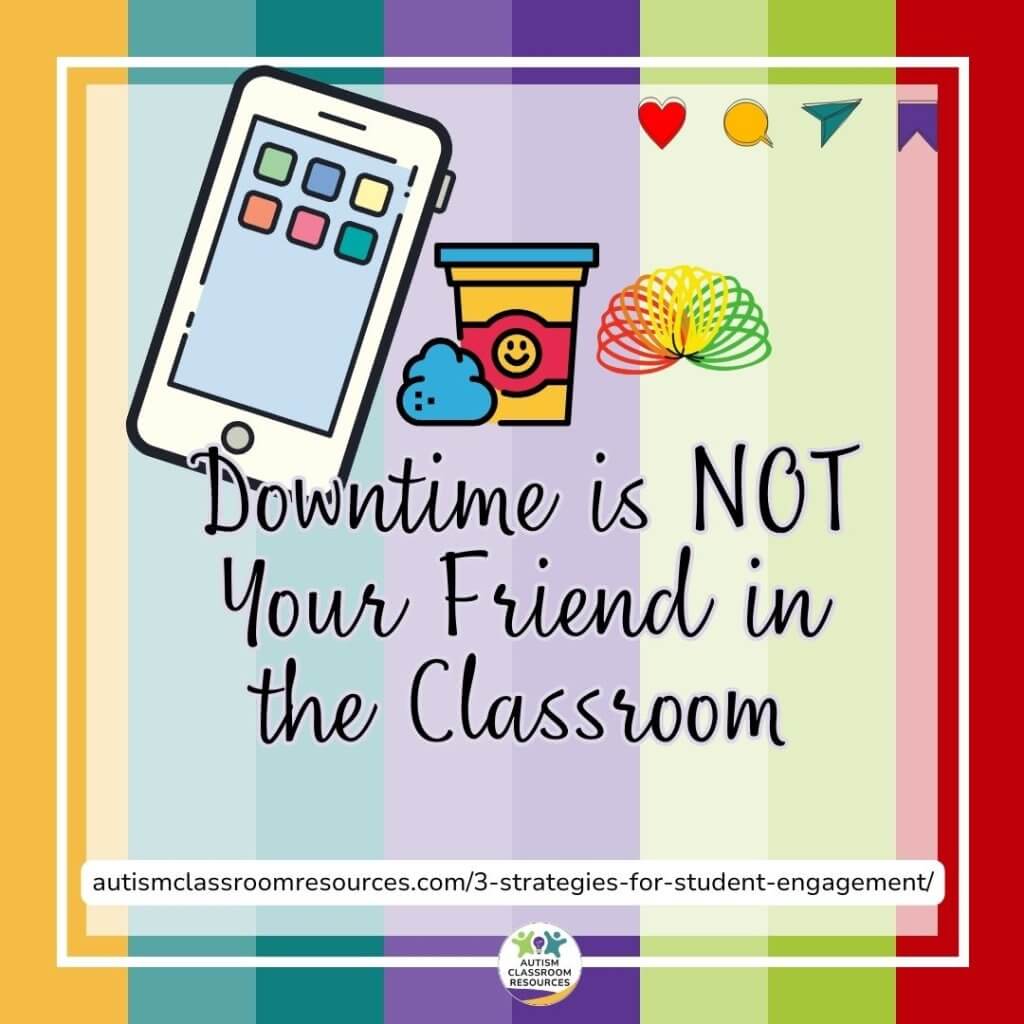
Waiting for the bus or waiting to go home is another time where we donít always realize we want to program activities. Programming activities may seem difficult at times like these because staff is involved doing other things. But i have 3 activities to share today that you can use specifically at these or other times when maintaining engagement is difficult.
Other times, students become disengaged because they something unexpected happened. Maybe you walked your students to specials and the teacher wasnít ready. So you have to wait in the hall.
Or you had a behavior crisis with a student that pulled staff away from the group. Then you may end up with downtime that results in more behaviors across the whole class because students arenít engaged.
So you can see that downtime is rarely something that is planned. Most frequently itís not planned. We all know that things come up and sometimes itís unavoidable. But the key is to plan for a ďbackupĒ plan to have on hand when needed.
3 Ways to Have a Backup Plan With Strategies for Student Engagement Maintenance
The key to maintaining student engagement is to always have a backup plan. One consideration is to program your day so there are limited opportunities for students to disengage. That means anticipating gaps in the scheduleĖor preparing for them in the future once you realize they are happening. The times like waiting on the busses or waiting for student arrivals are great times to program in activities that are likely to keep studets engaged.
It also means that you want to have strategies for student engagement banked and ready to go, whether itís pulling something out of your amazing teacher brain or literally pulling something out of your back pocket. This is critical for those times when you donít expect a pause in the routine or activities that might lead students to become disengaged.
So essentially it means you have to put potential gaps in engagement in your planning but also have extra activities for unexpected gaps. So let me share 3 easy to implement stragegies that are helpful in filling in both the expected and unexpected downtime gaps.
#1 Table Tasks
My first strategies for student engagement tip is to be proactive in your scheduling. Take a moment to think about the things that can cause wait time or downtime in the classroom. Transitions, especially when students arrive or depart, tend to be common times for this.
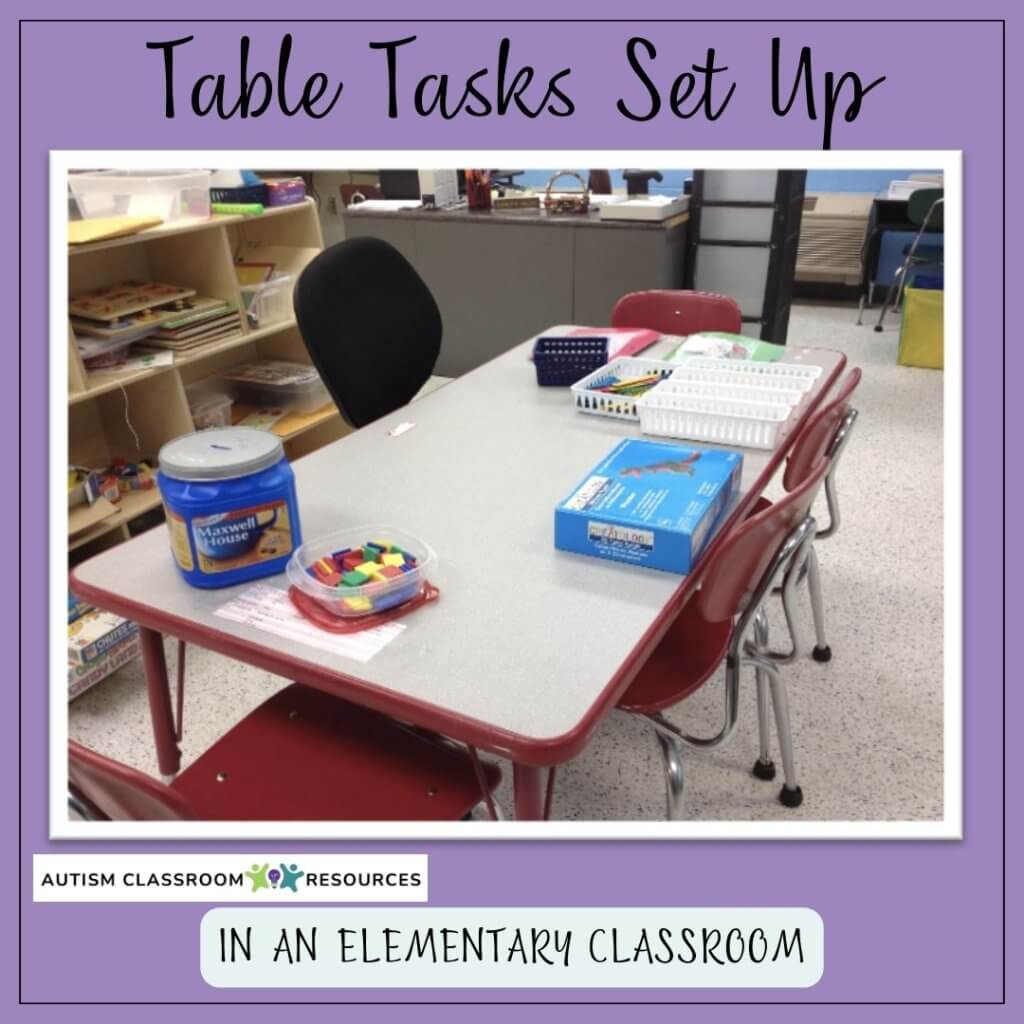
To address these planned downtimes, itís beneficial to schedule activities that allow students to work independently and fill those gaps. One strategy I like to use is incorporating Table Tasks during these times. These tasks involve visual-motor activities, similar to the ones used for independent work systems. There are several advantages to using visual-motor tasks to engage students during wait time.
They are likely to be tasks students can do more independently, so less supervision. Visual-motor tasks also donít require a listener or partner, as a language task would do These are great times to see what tasks the students can complete independently that could be put into their independent work systems.Table tasks might include put-in tasks, assembly tasks, file folders, puzzles, receptive language worksheets or more. You can read more about using Table Tasks in the classroom here.
#2 Independent Work Systems
Work systems are a huge strategies for student engagement for those unexpected interruptions to the routines, like having to address a behavior crisis. Because of the nature of independent work systems (e.g., they use mastered tasks, clear beginning and ends), they are an easy thing to transition the rest of the classroom to when there is a behavioral isssue.
Looking for Independent Work Tasks? Check out the store here.
There are two key elements you need to make this work. First, you need to have a pre-established plan with your staff that when there is a crisis or something that pulls staff away from the class as a whole, thatís a time when designated staff deal with the crisis and another designated staff (or more than 1 depending on your numbers) works with the rest of the students diverting them to independent work (and possibly other activities like table tasks if you donít have enough systems for everyone to use one at the same time).
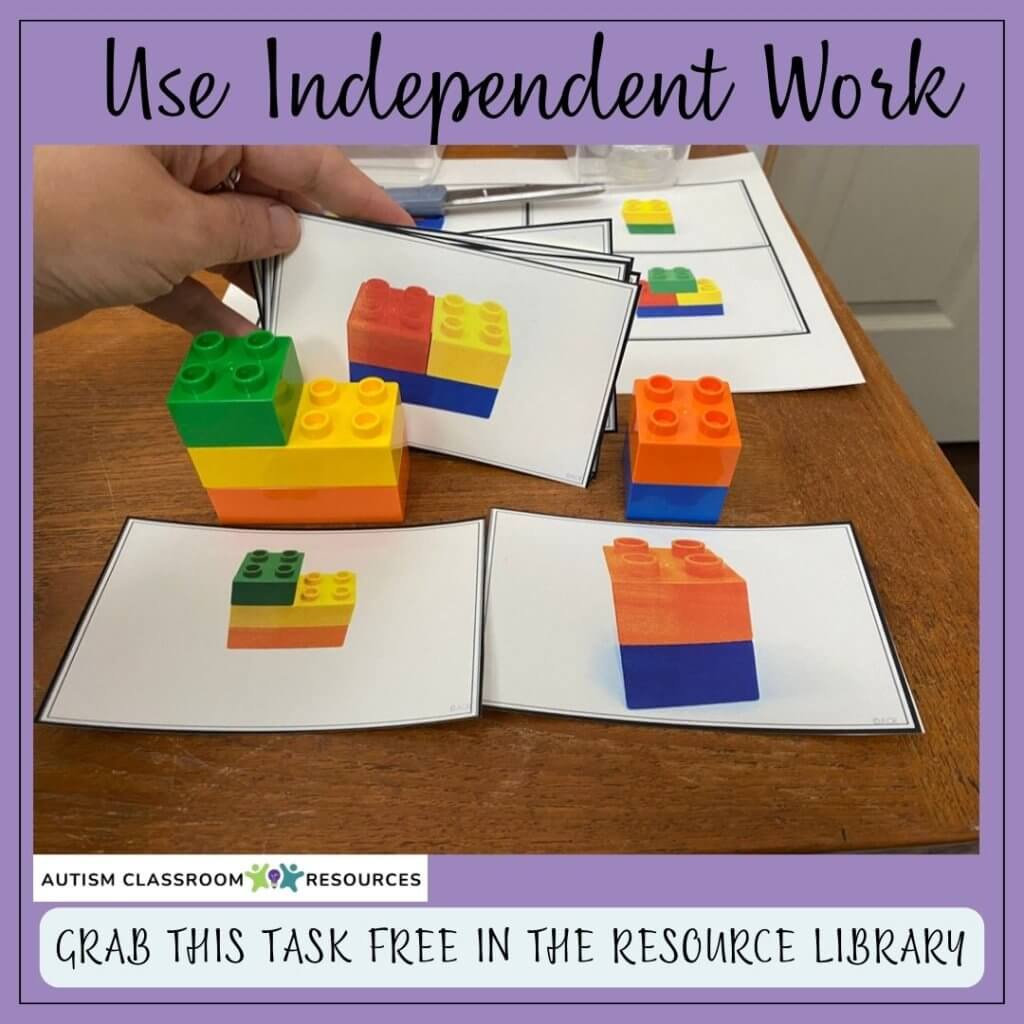 Click here to join the Resource Library
Click here to join the Resource Library
Frequently I have students who love independent work systems as their favorite time of day. And in a way it makes sense because it gives them a sense of completion, a sense of confidence and competence (because the work is work they can do independently), and it gives some of our students a nice break from adults telling them what to do all of the time. For all these reasons, independent work can be a great option for this type of situation.
The second key element you need is a central organization of work systems so that staff can make sure to pull materials for the work system for the students to complete that are in their skill range. I do this by having a master list of tasks that are numbered on the boxes or storage containers and checking off each student when they master that task. That makes it easy to refer to the list and pull the appropirate numbered bins for each student. You can read more about my organization of independent work systems here for ideas.
#3 Fidgets and Busy Boxes (or Tablets and Cell Phones)
Table Tasks are great in the classroom, but what about those moments when you find yourself in the hallway, waiting for the bathroom or for the last specials class to finish? Thatís where fidgets and busy boxes can save the day! Keeping studentsí hands and minds busy is a great set of strategies for student engagement.
Fidgets are similar to table tasks, but they involve hands-on toys and short activities that capture studentsí attention. Some fidgets even have a sensory element, like a glow stick or a glitter wand, which can further enhance engagement. Other options include activities that students simply enjoy doing, such as looking at books or using tablets or phones. These tools can be particularly handy for keeping students engaged while waiting in line.
Whether itís for students or adults, I always make it a priority to have a few activities up my sleeve that can fill in those gaps of time. Iíll never forget a preschool colleague of mine who could whip out a bean bag from his pocket and captivate all 20 preschoolers for a solid 20 minutes during a crisis. It was a skill that proved to be absolutely priceless.
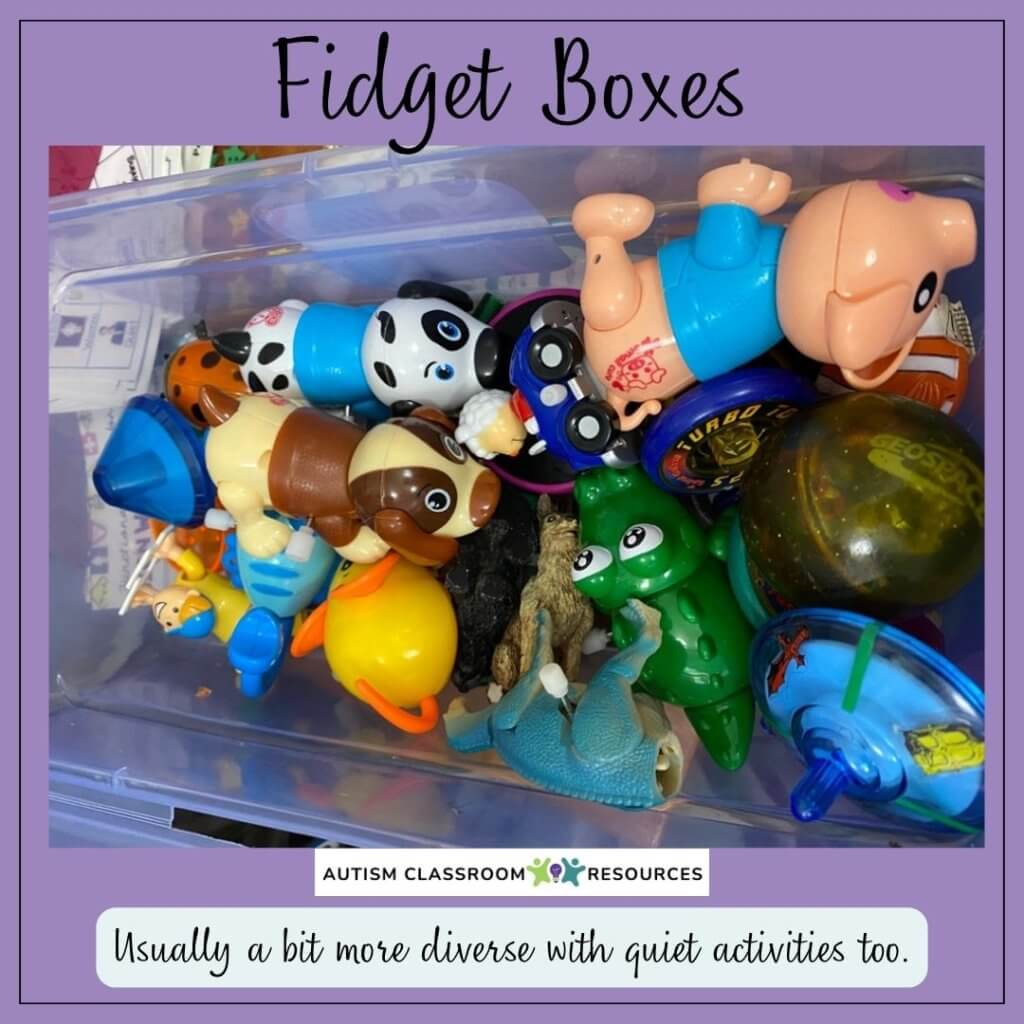
Similarly (since I donít possess that magical skill), I like to keep a trusty box of materials on hand that can be easily accessed to keep studentsí hands and minds occupied. And if youíre in a different area of the school, it can be incredibly helpful to bring this box of materials along with you.
The three elements you want to make sure you address with fidgets and busy boxes as strategies for student engagement are:
Curate the collection of items to meet hte individual needs of the students. Avoid having to share items since you often donít have privacy, space and staff needed to teach sharing at this point. Identify items that work to keep your students engaged with materials. Make sure you the items where you need them. PUt them in a box by the door to the classroom, for instance. And write on the zoning plan who is the established person who is in charge of bring the box with them when transitioning or when there is a fire drill or other disruption to the schedule. You might even store a box where you know you need it most often (e.g., inside the door of the music room, in a storage cubby in the cafeteria). And finally make sure that you teach the students how to engage with the fidget toys appropriately. Remember that a cell phone is often just an age-relevant fidget toy for adults standing in line because we know how to use it. For older students your ďfidgetsĒ might be a phone or a tablet that they kow how to use for leisure activities.Need More Ideas for Preventing Challenging Behavior?
In conclusion, it is essential for educators to take a proactive approach in reducing or preventing challenging behavior in the classroom. By implementing these three strategies for student engagement, you can ensure that students remain actively engaged in activities and minimize the occurrence of disruptive behaviors. Remember, being prepared and proactive is the key to keeping your classroom on track for learning. To learn more about preventing challenging behavior, make sure to grab our free webinar on the topic. Happy teaching!
Grab the FREE WebinarĖAvailable on YOUR Time and Get the Bonuses to Get You Started
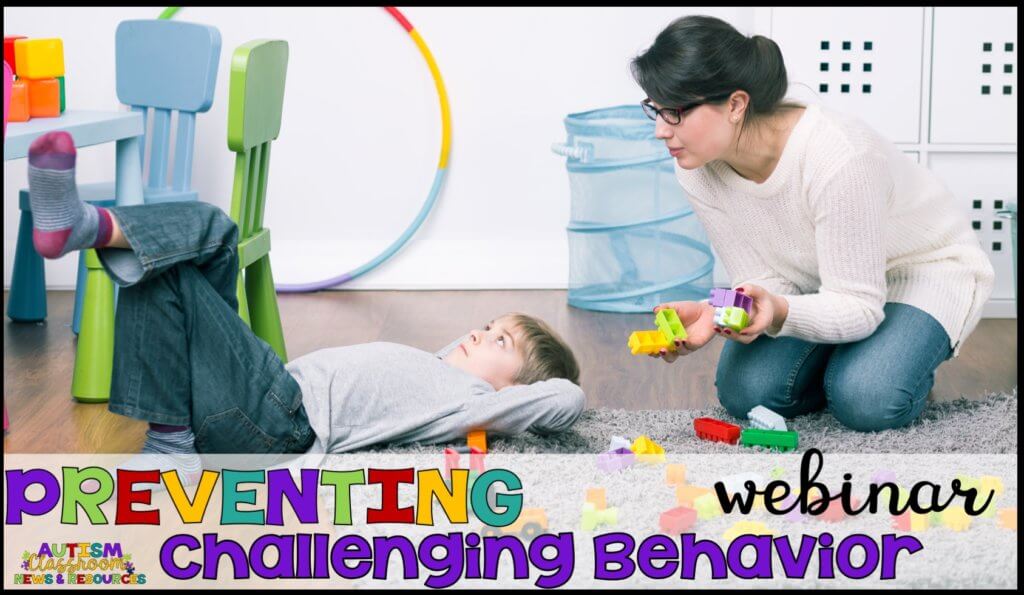
The post Engaging Special Education Students: 3 Strategies for Student Engagement Techniques that Work! appeared first on Autism Classroom Resources.






